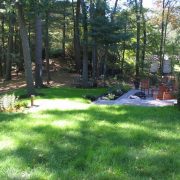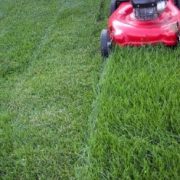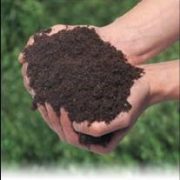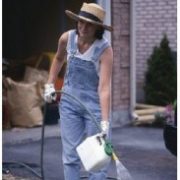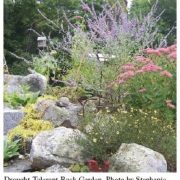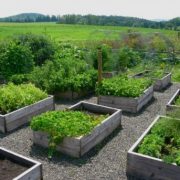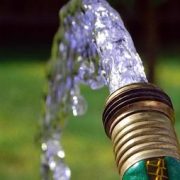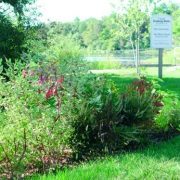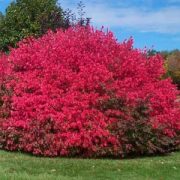Let Nature Provide…
Established Greenscapes have plants and turf with deep roots, which are naturally resistant to drought, weeds and disease.
Greenscapes are good for you, your wallet and your environment in many ways. By following the recommendations in this website, you will:
Increase your property values;
• Save money on your water bills;
• Nurture a safe environment for your family;
• Create more habitat for wildlife;
• Enjoy more free time by doing less landscape maintenance;
• Reduce stormwater pollution; and
• Protect your community’s water resources.
Sustainable landscaping practices drastically reduce water usage, encourage groundwater recharge, protect our water supply, and reduce stormwater pollution.
Fescue to the Rescue
In Massachusetts, lawns comprised of “turf-type tall fescue” grasses (chewings, hard, creeping red, and sheep) are a better choice than bluegrass lawns. Fescue lawns are drought tolerant and insect-resistant, and will survive in sunny or shady areas. They are easier to maintain than other grass types because they require less water and fertilizer. An added benefit is that fescues are slow growing grasses, so they require less frequent mowing. They can also tolerate the slightly acidic soils that are common in this area.
Mowing Practices for Healthy Lawns
Proper mowing techniques help create a lush, dense lawn that is naturally resistant to drought, weeds and disease. This dramatically reduces the need for adding water and chemicals – saving you time and money while protecting the environment.
Mowing with a dull blade causes serious harm to your lawn, making it weak and susceptible to drought, weeds and disease. Many of us try to repair the damage by adding water, fertilizer, chemicals and pesticides. It’s much easier on you, your wallet and the environment if you mow correctly and don’t cause damage in the first place.
Compost – Rich as Gold
Compost teems with microbial life and is undoubtedly the best thing you can add to your lawn and garden to promote plant growth
Spray compost tea on your lawn several times a year and watch your grass thrive. Compost tea is an effective, easy way to put nutrients on your lawn. You can buy it in a powdered form or make your own.
Pesticide Alternatives
It is a myth that pesticides (chemicals including insecticides, herbicides, and fungicides) are a mandatory part of landscape care. Pesticides are toxic substances that may pose a health risk to your family, pets and wildlife if they are overused or carelessly applied.
Want to Eliminate Lawn Problems Altogether? Plant Something Instead of Grass!
Beautiful landscapes don’t have to have expansive lawns covering the entire property, or for that matter include any lawn at all. Replacing part of your lawn with low maintenance ground covers, planting beds, gardens, patios or walkways will add color and dimension to your landscape, while increasing your property value at the same time.
Urban Gardening- Do You Live in an “Asphalt Jungle”?
Would you like to do Greenscaping but your yard has been paved over? More and more people are reclaiming urban areas for gardens. Creating raised beds can be the answer. Ideally, impervious surface (such as asphalt or concrete) should be removed, but an alternative is to build raised beds over existing hard surfaces that have holes drilled for water drainage.
Watering
It is a mistake to believe that you can’t over-water your lawn. Lawns that get too much water are weaker, and more susceptible to disease and “shallow root syndrome.” Once the lawn suffers damage, many of us try to repair the problem by adding even more water and chemicals. This is harmful to you, your lawn and the environment.
Rain Gardens- A Beautiful Way to Clean and Recycle Water
A rain garden is a bowl-shaped garden designed to collect and absorb runoff from a roof or parking lot. Rain gardens are constructed by filling a basin in a low-lying area with a special soil blend, hearty plants, mulch and sometimes a layer of gravel.
Avoid Invasives
Whatever plant you choose for your landscape, be sure to avoid invasives!
Low Maintenance Plants
This is just a sampling of some of our favorite plants — ask a trusted landscape professional for additional information.

